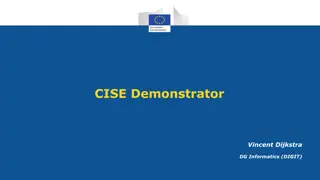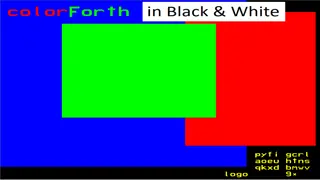Understanding Bellman-Ford and Dynamic Programming on Graphs
Exploring Bellman-Ford and Floyd-Warshall algorithms, Dijkstra's Algorithm, shortest path problems, dynamic programming on graphs, and solving distances in a directed acyclic graph. Learn about recurrences, evaluation orders, topological sort, and handling cycles in graphs.
0 views • 39 slides
Understanding All Pairs Shortest Paths Algorithms in Graph Theory
Learn about various algorithms such as Dijkstra's, Bellman-Ford, and more for finding the shortest paths between all pairs of vertices in a graph. Discover pre-computation benefits and clever recurrence relationships in optimizing path calculations.
0 views • 35 slides
Combining Graph Algorithms with Data Structures and Algorithms in CSE 373 by Kasey Champion
In this lecture, Kasey Champion covers a wide range of topics including graph algorithms, data structures, coding projects, and important midterm topics for CSE 373. The lecture emphasizes understanding ADTs, data structures, asymptotic analysis, sorting algorithms, memory management, P vs. NP, heap
0 views • 38 slides
Shortest Paths Algorithms and Applications Overview
This material covers various aspects of shortest path algorithms, focusing on Dijkstra's algorithm with binary heap and its time complexity. It delves into the history of shortest path algorithms, highlighting key authors and their contributions. Additionally, it explores different applications of s
4 views • 27 slides
Overview of Mutual Exclusion and Memory Models in Distributed Systems
Discussion on fast, randomized mutual exclusion techniques by George Giakkoupis and Philipp Woelfel. Exploring asynchronous shared memory systems with atomic operations. Understanding mutual exclusion principles as outlined by Dijkstra in 1965 and measuring time efficiency in critical sections. Delv
2 views • 23 slides
Priority Queues: Operations and Implementations
Priority queues are data structures that allow efficient insertion, deletion, and retrieval of elements based on their priority. This information-rich content covers various aspects of priority queues, including ideal times, binomial queues, Dijkstra's algorithm for single-source shortest paths, and
0 views • 11 slides
Understanding Continuity Analysis of Programs
This content delves into the concept of continuity analysis in programs, focusing on aspects like uncertainty, robustness, and infinitesimal changes in inputs and outputs. It explores the implications of handling uncertainty robustly, the significance of correctness in uncertain environments, and th
0 views • 17 slides
Understanding Spanning Trees and Minimum Spanning Trees
Explore the concept of spanning trees and minimum spanning trees in graph theory through an in-depth lecture outline covering topics like Cut Property, Cycle Property, Kruskal's Algorithm, and more. Delve into the significance of Minimum Spanning Trees (MSTs) as the lowest-cost spanning tree of a gr
0 views • 41 slides
Algorithm Strategies: Greedy Algorithms and the Coin-changing Problem
This topic delves into general algorithm strategies, focusing on the concept of greedy algorithms where locally optimal choices are made with the hope of finding a globally optimal solution. The discussion includes the nature of greedy algorithms, examples such as Dijkstra's algorithm and Prim's alg
0 views • 91 slides
Developing a Minimax AI for Hex Game Challenge
Creating an AI program using the minimax algorithm to challenge competent human players in the game of Hex. Tasks include board state representation, user interface design, win condition testing, and utilizing Dijkstra's algorithm for static evaluation. The AI builds decision trees to determine opti
0 views • 22 slides
European Commission CISE Demonstrator Project Overview
The European Commission CISE Demonstrator project led by Vincent Dijkstra from DG Informatics aims to identify service specifications, facilitate cooperation between Member States, and test concepts for exchanging information between service consumers and providers. The project follows a bottom-up a
0 views • 14 slides
Bridging the Conceptual Gap: Edsger Dijkstra's Insights
Edsger Dijkstra urged programmers to shorten the conceptual gap between static programs and dynamic processes, emphasizing the importance of clarity in source code for easy understanding and execution. Chuck Moore's colorForth, an attempt at using color to replace punctuation, ultimately faced limit
0 views • 33 slides
Graph Modeling in Data Structures and Algorithms
Exploring graph modeling in CSE 373, this lecture covers topics such as using BFS for finding shortest paths, limitations of BFS on weighted graphs, and the introduction of Dijkstra's algorithm for weighted graphs. It emphasizes the importance of considering edge weights in determining traversal ord
0 views • 29 slides
Algorithm Design and Design Decisions Review for Computer Science Exam II
This review covers topics such as efficient algorithm design for shortest path problems using reductions and designing data structures for managing tasks and flashcards in computer science. It includes explanations of how to improve on Dijkstra's algorithm and the use of data structures like stacks
0 views • 52 slides
Understanding Dijkstra's Algorithm for Shortest Paths with Weighted Graphs
Dijkstra's Algorithm, named after inventor Edsger Dijkstra, is a fundamental concept in computer science for finding the shortest path in weighted graphs. By growing a set of nodes with computed shortest distances and efficiently using a priority queue, the algorithm adapts BFS to handle edge weight
0 views • 30 slides














